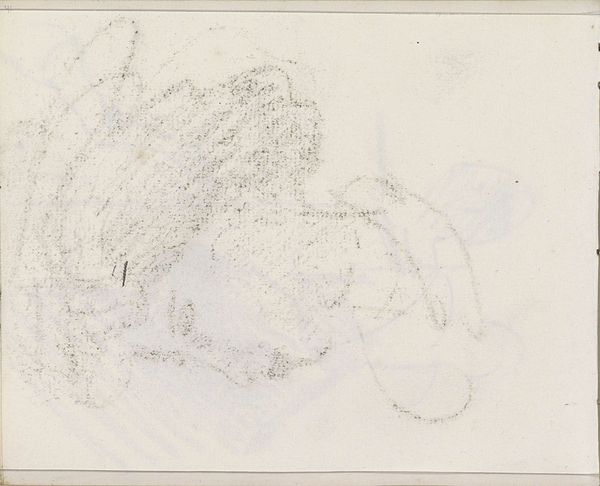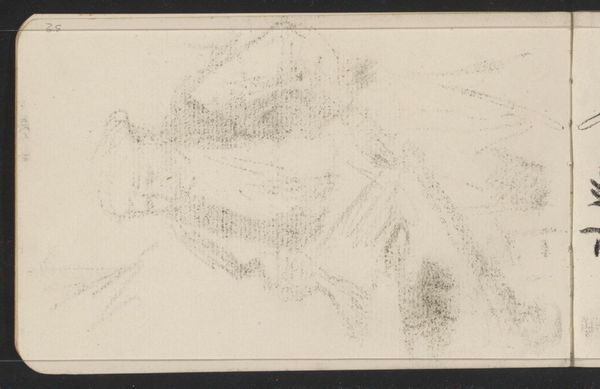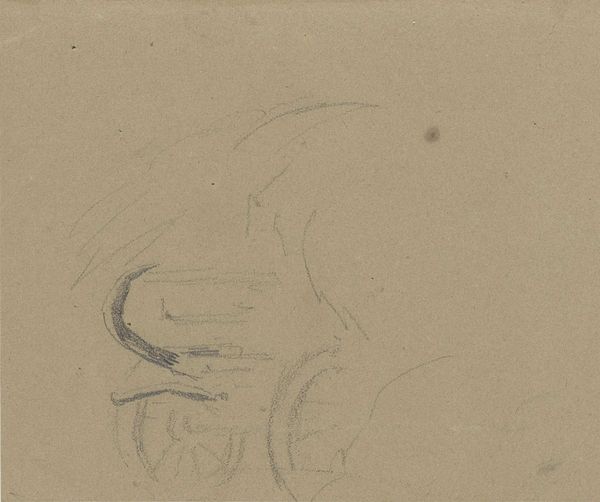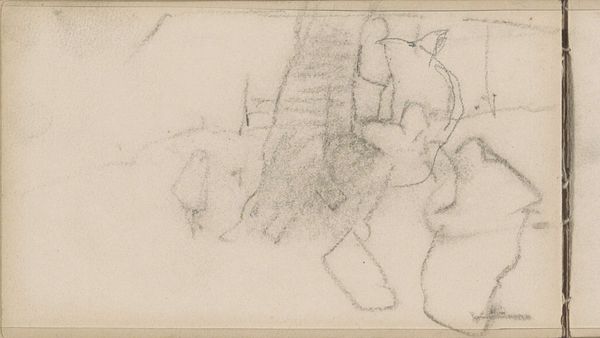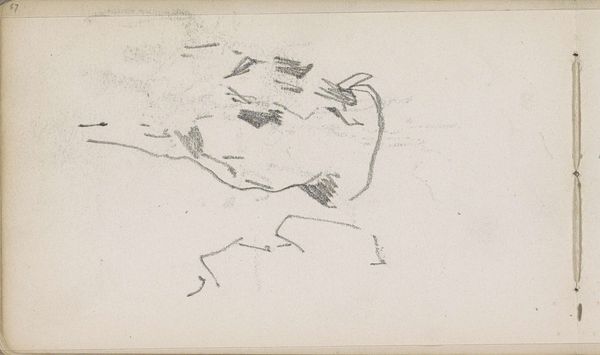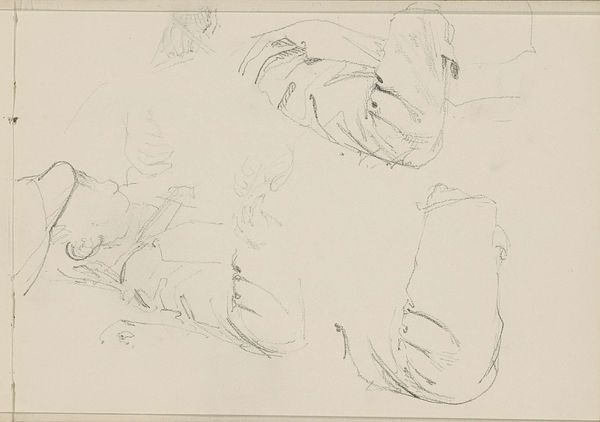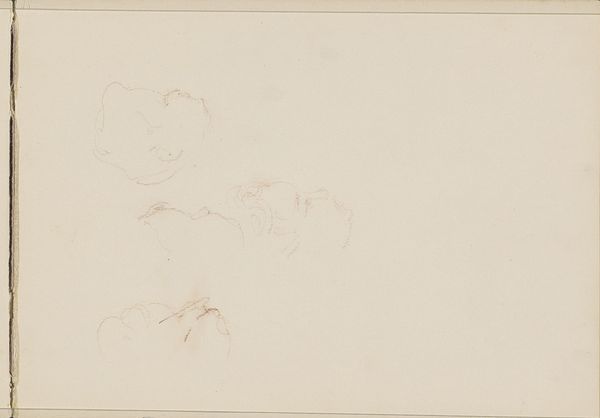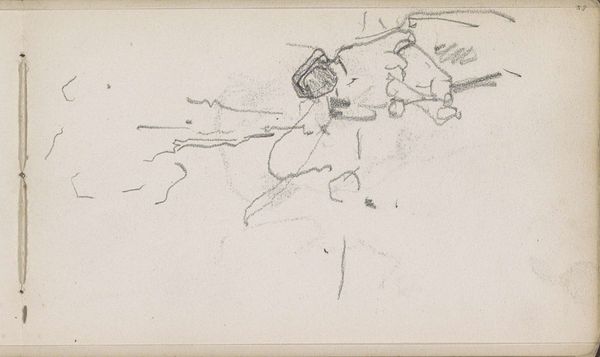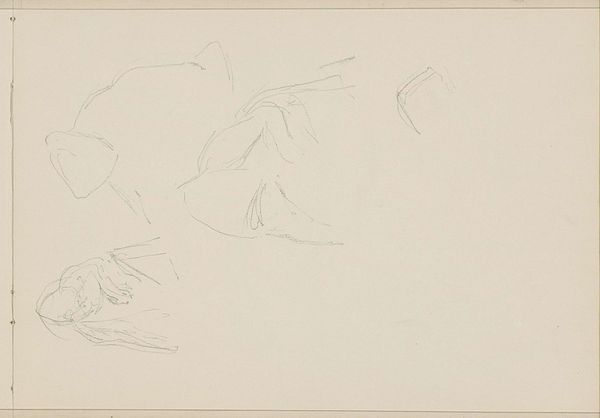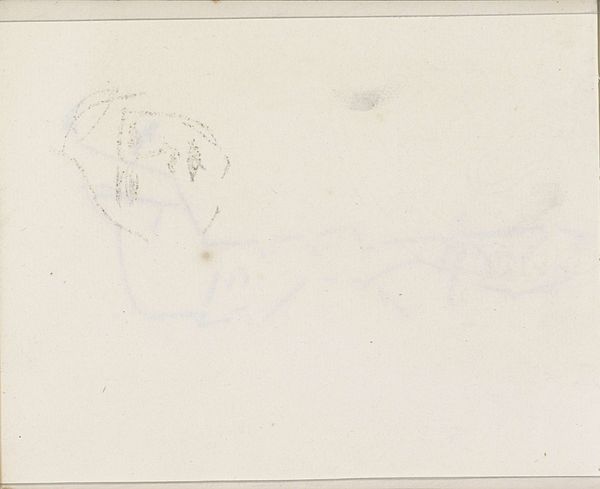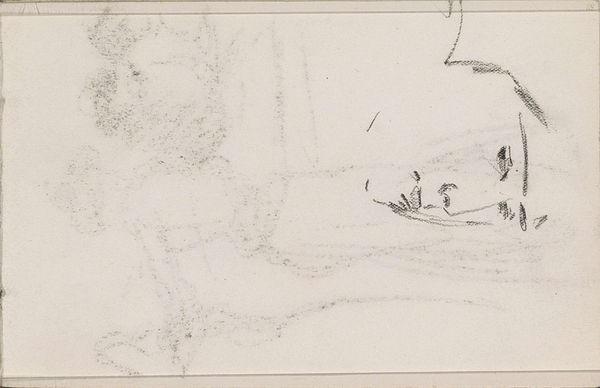
Copyright: Rijks Museum: Open Domain
Editor: Here we have Isaac Israels’ “Abklatsch van de krijttekening op pagina 10”, a drawing in graphite on paper made sometime between 1875 and 1934. It's quite abstract. Honestly, I'm having a hard time figuring out what, if anything, it depicts. What do you see in this piece? Curator: It’s tempting to see pure abstraction, but given Israels’ usual subject matter – city life, people – and the title referencing a page of drawings, it suggests a rejected sketch or a practice piece. The very act of reproduction implied in "Abklatsch" makes me consider how images circulate, who has access, and the value assigned to different versions. Editor: So you’re thinking about the institutional framing – the title, the implied process. Curator: Exactly. A key aspect of Impressionism was its democratizing influence, wasn't it? Consider how, as photography became popular, painting had to distinguish itself, thus moving from accurate representation to capturing fleeting impressions. Israels' sketch asks, 'what is art?' if it’s just a reproduction of a reproduction, divorced from a finalized "original"? Was this intended for public consumption? I doubt it. Which makes its presence in the Rijksmuseum a socio-political statement in itself. Editor: It's interesting that you mention the democratization of art, I was primarily considering it from an aesthetic point, in how it challenges the traditional concept of representation, as this to me barely does, however your points on institutions are certainly well worth considering. Thanks! Curator: The intersection of those two readings is very productive I believe. Both emphasize art’s shifting relationship to society, each offering new ways to frame historical change through art.
Comments
No comments
Be the first to comment and join the conversation on the ultimate creative platform.
